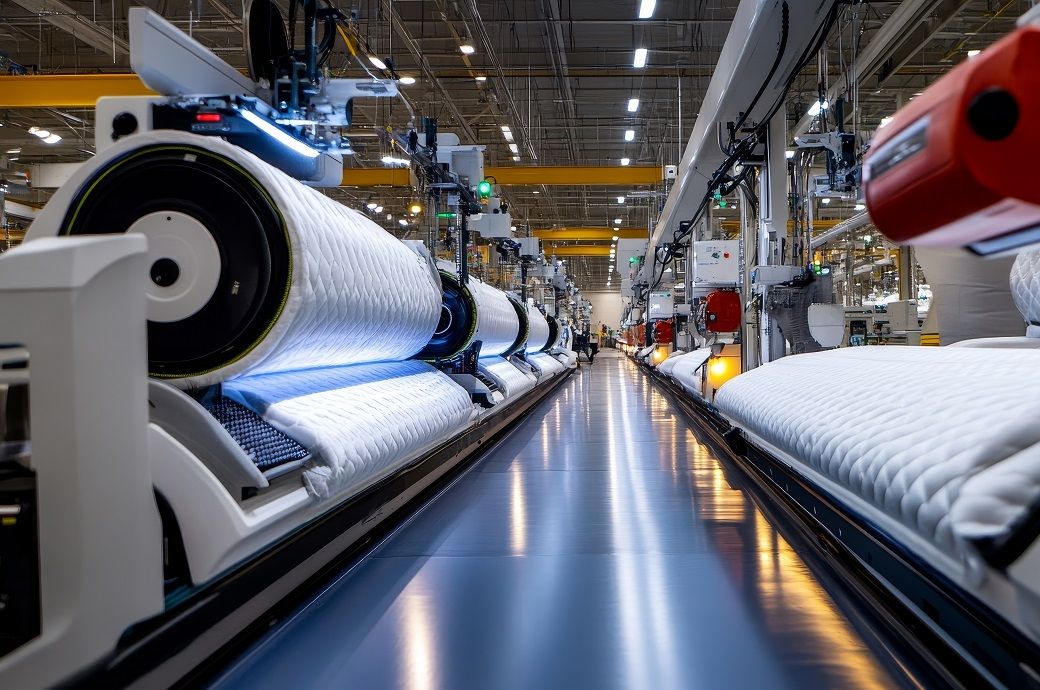
The seasonally adjusted US Manufacturing Purchasing Managers’ Index (PMI) fell to 49.8 in July from 52.9 in June, signalling the first overall contraction in 2025. Weaker market demand drove the decline, with new orders rising only marginally—the weakest pace of the year so far.
Panellists cited persistent client caution, particularly over trade and tariff policies, leading to reduced commitment to new business, especially among overseas buyers. New export orders dropped for the first time in three months, with some manufacturers reporting lower sales to China, the European Union, and Japan, S&P Global said in a press release.
International sales weakened, and federal policy uncertainty further dampened sentiment. Output growth slowed to only marginal levels, while confidence in future production fell to a three-month low. Still, most firms expect output to rise over the next year if trade tensions ease.
Employment declined slightly for the first time since April, with firms reluctant to replace departing staff or hire new workers due to softening demand, excess capacity, and cost concerns. Backlogs of work fell in July, reversing a modest rise in June.
Inventory management also weighed on the sector, as companies reduced stock levels for the first time in three months, opting to draw down existing inventories rather than source fresh inputs. Purchasing activity grew modestly, reflecting the fading impact of earlier efforts to build up stock ahead of anticipated tariffs.
On the pricing front, input costs continued to rise steeply due to tariffs, though the rate of inflation eased significantly from June’s near three-year high. Selling prices increased for the second consecutive month, recording the second-sharpest rise since November 2022.
Suppliers were widely reported to be raising charges, but there were some positive developments— average lead times improved for the first time since September 2024, marking the fastest improvement in nearly 18 months, as vendor stock availability and reduced backlogs supported smoother deliveries.
While the sector faced challenges from weakening demand, tariff-related cost pressures, and policy uncertainty, manufacturers remain cautiously optimistic that a resolution to trade tensions could restore stability in the coming year, added the release.
“July saw the first deterioration of manufacturing operating conditions since last December as tariff worries continued to dominate the business environment,” said Chris Williamson, chief business economist at S&P Global Market Intelligence. “The downturn at the start of the third quarter in part reflects the passing of a busy period of tariff-related inventory accumulation in prior months.”
He added that factories saw minimal growth in new orders in July and cut back on stock holdings of both raw materials and finished goods. This followed inventory build-ups in May and June, driven by concerns over rising import costs and potential supply shortages linked to tariff hikes.
“Input prices continued to rise at a steep rate, with these higher costs often being passed on to customers to drive another month of elevated selling price inflation, but there are signs that these price pressures may have peaked back in June,” added Williamson. “Optimism about the year ahead has meanwhile taken a knock as factories worry about reduced demand from customers, especially in export markets, and the inflationary impact of tariffs. Employment consequently fell as factories trimmed headcounts amid concerns over rising costs and lower sales.”
ALCHEMPro News Desk (SG)
Receive daily prices and market insights straight to your inbox. Subscribe to AlchemPro Weekly!